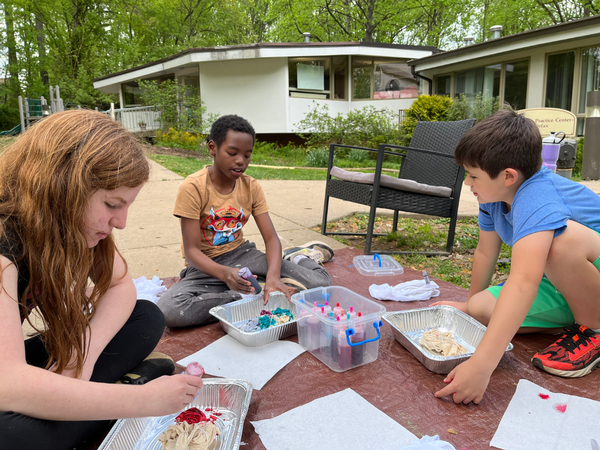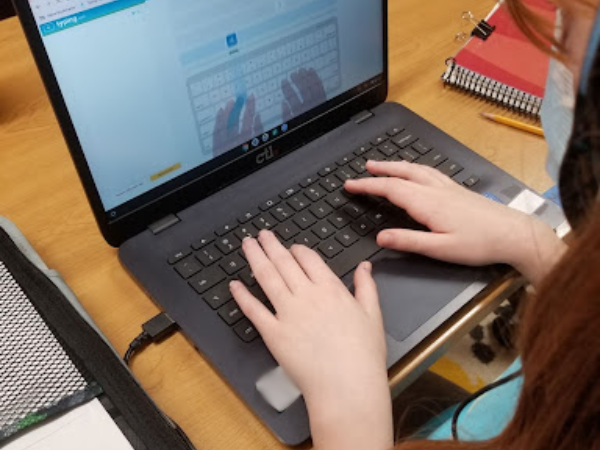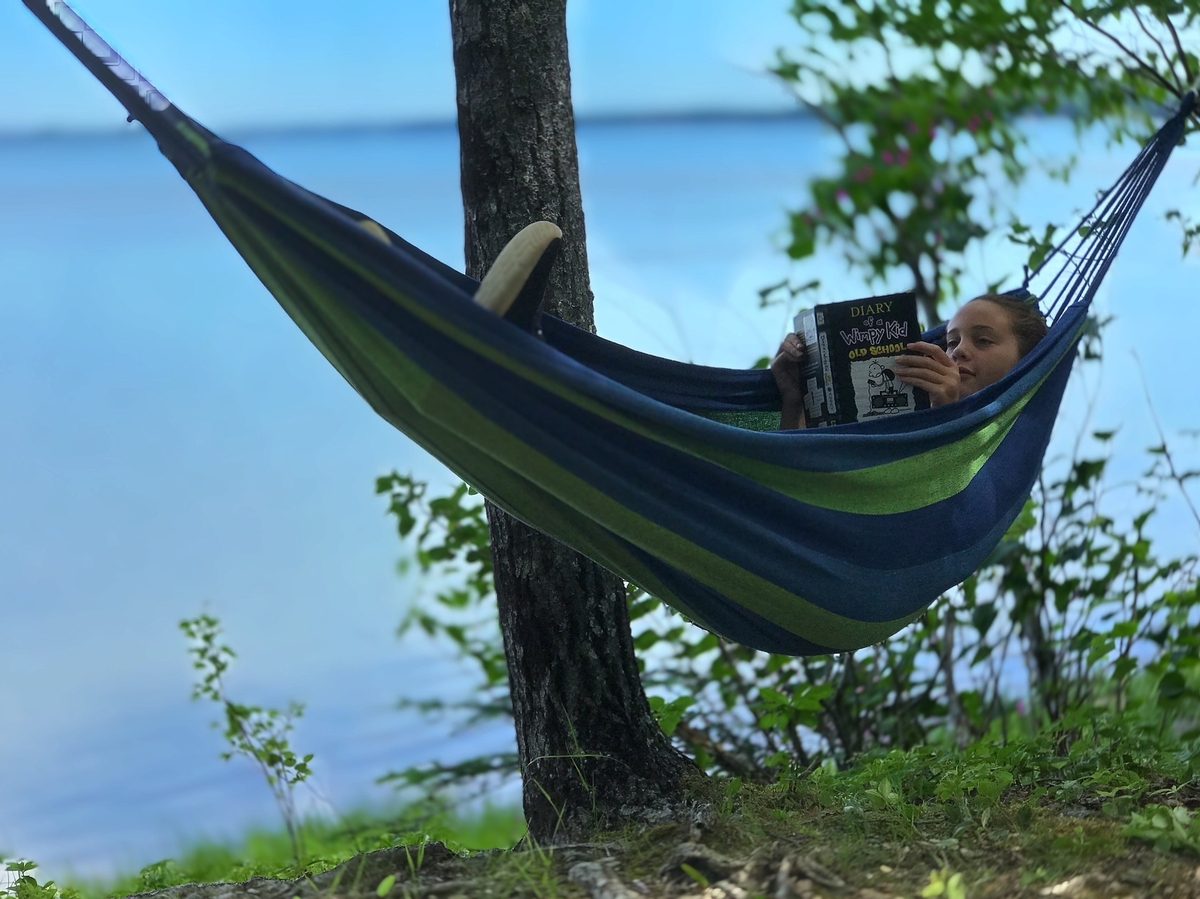Empowering students with language-based learning differences

Siena Blog



The Siena School Blog
Discover, Learn, Celebrate, and Empower
Welcome to Siena's blog, your source for helpful, cutting-edge resources tailored to teachers, parents, and other advocates in the learning differences community. We are dedicated to providing a wealth of curated knowledge spanning various topics, ranging from dyslexia advocacy and awareness to classroom teaching strategies, heritage month profiles, and social and emotional health.
Summer Boredom Busters

Fun Summer Activities for Students
Another summer is here, and parents might be looking for good activities to both engage their children and give a little bit of structure to the days and weeks ahead.
Ideal summer activities for school-age children often entail movement, creativity, and interactivity; they might also be multisensory and tactile to further engage children’s brains and alleviate boredom.
Scheduling some regular activities has the dual benefit of keeping children active and giving their summer days some structure. Many studies have shown the benefits of structure for children, especially those with ADHD. ADDitude has some good resources for daily schedules for parents and children to adapt for the summer.
Ideas for Indoor Activities
- Take a trip to your local library and get a bunch of books—mix in some old favorites with new ones to keep children reading
- Pick a book or two to write or imagine a prequel, sequel, or other extension of the story as a creative exercise
- Take on some Lego challenges inspired by Lego Masters builds (see also their Lego YouTube Channel)
- Make fidgets from Lego or other materials (these can also help with focus and anxiety management throughout the year)
- Try some fun DIY crafts, repurposing, and upcycling of various materials around the house
- Enjoy some age-appropriate baking or cooking projects and turn your kitchen into a Mini Master Chef
- Have a family dinner and a movie marathon—maybe with food from your Mini Master Chef kitchen
- Try some at-home science experiments, such as these suggestions from Good Housekeeping, Tinybeans, and SplashLearn
- Make slime or homemade play dough
- Create some DIY board games, paper airplanes, musical instruments, and more
- Design a puzzle scavenger hunt with clues to find certain pieces—parents and children can even take turns!
Ideas for Outdoor Activities
- Let children practice outdoor art with some sidewalk chalk, finger painting, fence painting, or tie-dyeing
- Plan a backyard camping night
- Cool off and engage the senses with outdoor water fun
- Experiment with some backyard science—see Steam Powered Family and Childhood 101 for good ideas
- Have children design a DIY scavenger hunt or obstacle course to exercise their creativity and their bodies
- Make (or expand) a backyard garden
- Build a birdhouse or bird feeder and keep a list of which kinds of birds visit
- Take regular walks and create nature collages based on what children see and find
Whether they’re happening indoors, outdoors, or in both places, hands-on activities like these provide opportunities for creativity, imagination, and exploration. They not only keep kids occupied but also allow them to develop various skills while having a great time with their families and/or friends.
Resources for Fun Summer Activities
See these resources for additional activities and ideas to keep school-age children engaged this summer:
- Ann Dolin of Educational Connections recently shared this post with 10 Writing Activities for Kids This Summer, which includes suggestions for elementary, middle, and high school ages.
- 100 Summer Fun Ideas for Kids and Parents (Very Well Family)
- 24 Low-Cost Summer Activities for Kids (Parents)
- 20 New Ideas and Activities to Try This Summer (PBS KIDS for Parents)
- Get Ready for Summer! Ideas for Teachers to Share with Families (Reading Rockets)
Last summer, Siena’s blog featured pieces on summer reading ideas for elementary, middle, and high school ages and tech skills to practice over summer break.
The Siena School proudly serves students with dyslexia and other language-based learning differences in grades 3-12 on campuses in Silver Spring, Maryland, and Oakton, Virginia.
2 Important Tech Skills Students Can Improve Over the Summer

As students are reviewing their summer packets or doing other academic work, the summer is also a great time to reinforce tech skills. This needn’t be too complex or time-consuming: brushing up on students' tech skills can be an easy and fun part of their weekly summer routines.
Technology at Siena is integrated into the curriculum across all divisions and subjects. Students routinely use laptops, assistive technology, and a host of multimedia apps in classes to enhance their learning and equip themselves with 21st-century skills.
Likewise, summer tech work can be integrated into students’ other academic and social activities. Here are two key tech skills that students can easily learn—or improve—this summer while they’re getting some well-earned downtime after a long school year:
Touch Typing Skills
Touch typing is an important way for students to get their ideas onto paper (or a screen). As opposed to the hunt-and-peck approach of using their index fingers, touch typing can teach students to type via muscle memory so they can focus less on the how of expressing their ideas—and more on the ideas behind their writing.
For students with dyslexia and other language-based learning differences, touch typing is a multisensory approach that complements the assistive technology they might already be familiar with—such as Speech to Text—and helps develop a skill they can use throughout their time in and out of school.
Parents looking for ways their children can improve their typing skills this summer can look into Typing.com, which we use at Siena during the school year. There are also free apps that don't require an account to use, like TypingClub, as well as apps like Nitro Type that let students hone their skills by competing against other users through interactive, visual, and gamified learning.
As this Read and Spell blog post shares, “For dyslexic students, learning touch typing emphasizes spelling and phonics. Repeatedly encountering high frequency words also helps with training learners to recognize words by sight, which saves them from the decoding process that causes trouble in reading.”
Regardless of which typing app they use, students can hone their skills by practicing regularly each week of the summer.
Designing Basic Games
K-12 educators are increasingly using games and other interactive content in their classrooms, such as Kahoot! quizzes, WordFlight, and Prodigy. This 2021 article from Edutopia emphasizes games’ educational benefits, such as to “increase student participation, foster social and emotional learning, and motivate students to take risks.”
“It’s important to recognize the educational value of interactive games such as Minecraft,” adds Siena Director of Technology Simon Kanter, “insofar as they can develop students’ reasoning, problem solving skills, and social skills.”
Students who enjoy learning through games during the school year might enjoy spending some time over the summer creating their own through a platform such as Scratch. Originally developed at MIT, Scratch is a free service that lets students recreate classic games on their own while increasing their digital fluency and computational thinking. Siena students have used Scratch during the annual Hour of Code and during weekly Coding Club.
As Scratch’s website notes, “The ability to code computer programs is an important part of literacy in today’s society. When people learn to code in Scratch, they learn important strategies for solving problems, designing projects, and communicating ideas.” (See here for information and FAQs for parents about Scratch.)

Coupled with regular work on touch typing, learning basic coding and game design through Scratch over the summer can help students sharpen their tech skills to prepare them for next school year.
Resources for Summer Technology
See Siena’s blog for more posts about having a rejuvenating and productive summer, including ones on the benefits of summer tutoring and on summer camps and academic programs.
For additional ideas, you could also look at this guide (primarily for older students) from the University of Toronto St. George, as well as these STEM Resources (for middle- and high-school students) from Texas Instruments. And, have a look at this iD Tech blog post on helping kids develop their tech learning and related skills.
No Summer Camp? Ideas for Summer Fun at Home

With a different kind of summer this year, parents might be looking for resources to not only structure their kids’ time but also give them some (fun) intellectual work to ready them to thrive next school year.
Sara Weiser, an occupational therapist in Northern Virginia, noted in a recent webinar that, “As parents, we sometimes forget that kids really thrive on structure and routine.” In the same webinar, Maria Zimmitti, a psychologist and clinical director in the DC area, added: “Summer is not the time to make up everything that was lost in the last ten weeks of school. Keep it simple.”
Thankfully, parents looking for a manageable, flexible structure this summer have options for balancing their work needs with family time, children’s learning and leisure needs, and their own self-care. Many of the ideas for trips, tours, and social activities that we shared for virtual spring break could also work for the summer.
Here are some more ideas and resources for families that can get kids moving, keep activities multisensory, and allow for some independent and some social time:
 Planning and Scheduling
Planning and Scheduling
- Have a visual schedule that allows for some flexibility and input from the whole family, so everyone in the family feels heard and paid attention to. What kinds of options can give kids some control and choice, while still ensuring an appropriate level of structure? (See below for a sample schedule.)
- Ann Dolin, owner of Educational Connections, suggests asking kids, “What do you want to learn or do this summer?” From there, each family member can brainstorm around their interests and write their answers on Post-its (each family member gets their own color). Sharing and discussing options as a family helps identify a few activities to build summer plans around, which can then turn into a chart with multiple columns for each person.
- For talking to high school kids, Zimmitti suggested that parents schedule a meeting to discuss important topics so everyone has mental prep time. Sending a calendar invite and letting kids pick the time and day avoids springing important discussions on teenagers, who might not be flexible or amenable to ideas if they feel blindsided. As well, she advocated giving teens daily and weekly tasks but letting them decide when to do them; this potentially gives high schoolers a nice balance of responsibility and flexibility.
- Regardless of whether kids are internal or external processors, allowing lead-in time for the discussion helps parents process along with their kids, provided that they follow the R.U.L.E. approach (Resist the urge to tell them what to do, Understand what they want to do, Listen with empathy, and Encourage them).
 Indoor Activities
Indoor Activities
- Reading-based games and activities, such as virtual book clubs and read-alouds, are encouraged. Parents could coordinate a virtual read-aloud to give kids some social time, as well as help each other get some work or down time. Older readers might even like leading the read-alouds for younger kids.
- Kids can both listen to stories read and see some animations at Storyline Online: it’s primarily for younger readers (K–4) but could also be good for older kids’ nostalgia and seeing celebrities they might already know read old favorites. Audible is another fantastic resource for readers of all ages, including their free audiobooks for kids.
- Some parents are rereading and sharing old favorites with their children. Have your old copy of The Hobbit, Tales of a Fourth Grade Nothing, or the original Choose Your Own Adventure series? This is a good time to introduce them to your kids, who could then share them with their friends. Parents can either co-read these with younger children or have older children read them on their own and report back in a fun book report or reaction list. Parents could also choose one dinnertime and make it a book discussion—or even get a special to-go meal when they can then have a book discussion and one-on-one time with their child about a book they both read.
- Parents could do the same with movies they enjoyed in their youth to give kids a quasi-educational activity and sneak in some learning (e.g., watching a film adaptation of a favorite book and then steering the kids to the book, or vice versa). Arranging a virtual movie night around parents’ old favorites could be a fun (and repeatable!) social activity too.
- Kids ages 9–14 interested in video editing can attend Virtual Video Production Camp from Zack Wilson, a teacher at Takoma Park Middle School in Takoma Park, Maryland.
- Preteens and teens might enjoy the Virtual Music Production Songwriting Camp from Dudley’s B Sharp Academy. There are 5 sets of dates in July and August; email info@bsharpworld for information and registration.
- Kids of various ages can leverage their creativity into sharing and/or volunteering opportunities. Have a child who likes to cook or bake? Look into how they can teach others their skills virtually (such as a younger relative). Parents could also help kids figure out how to cook or bake things for front-line workers, as well as donate items to a local food pantry. For example, Montgomery County, Maryland, has a full list of volunteering opportunities; check for other opportunities in your area.
- Enjoy some family game time with Scrabble, Word Witt, or other games that merge fun and language learning.
- Additional creative/learning options include John Spencer Writing Prompts on YouTube, BrainPOP, and BrainPOP Jr.
- Check out Virtual Field Trips, which has many options sortable by age.
 Social and Outdoors Time
Social and Outdoors Time
- We Are Teachers shares some great Fourth of July (and after!) activities for families, multisensory water activities for STEM and other kinds of learning, and imaginary vacations that parents can take to Paris and elsewhere with these 21 books.
- Many of Parade’s 125 things to do with kids at home can still be done over the summer, such as setting up a treasure hunt, playing Read-at-Home bingo, taking virtual museum or aquarium trips, and more.
- Connecticut Children’s has ideas for geocaching, exploring science at home, virtual museum trips, and more.
- Moving and working on team-based sports skills can be quite difficult when leagues aren’t in session. Without team activities and practice settings, young athletes can still keep themselves in shape and develop good habits. Some parents could involve coaches and other mentors for virtual meetings and training sessions.
- To both leverage technology and gamify learning, parents could introduce friendly competitions between kids (or whole families!). Number of steps? Skills building? Successful gardening or flower growing? Scavenger hunts? Cell phone photography? Lego builds and challenges? Parents could agree on a prize for the winner to further incentivize the competition.
 Resources
Resources
- Siena counselor Holly Rothrock wrote about self-care and anxiety management, which remain important as the pandemic and related closures and other social restrictions continue.
- American Camp Association’s Resource Library has ideas for parents, and a page full of organizations offering virtual resources for mindfulness and mental health.
- Documentary filmmaker Delaney Ruston’s Screenagers continues to be a useful support for parents dealing with teens and screens. See their resources and information about online events.
- Parents can also learn more about high- and low-dopamine screen activities to manage screen time (which can sometimes be good).
- Dyslexia Help from the University of Michigan has a lot of information for parents about finding kids’ interests over the summer and improving reading and writing.
- Allison Sibley of The Sibley Group offers “Summer Ideas during COVID” and a family communication plan about continuing to deal with the pandemic and related closures, as well as preparing for limited social activities outside the house.
- Sara Weiser offers resources on her website, including Flexible Structure Tips for making a visual schedule.
- My Learning Springboard has a blog and other resources, including “How To Avoid the Summer Slide.”
- Ann Dolin offers her “Homeschooling During COVID-19” e-book, among other resources.
Managing kids’ energy and boredom while engaging their minds, bodies, and social needs might take a whole-family effort, so communicating and exploring options is especially important. Summer break doesn’t have to be broken this year. It can, in fact, be more connected and constructive than it might seem at first.
*Note: We do not endorse any of the above sites or resources. Please check the privacy and appropriateness for your child.


